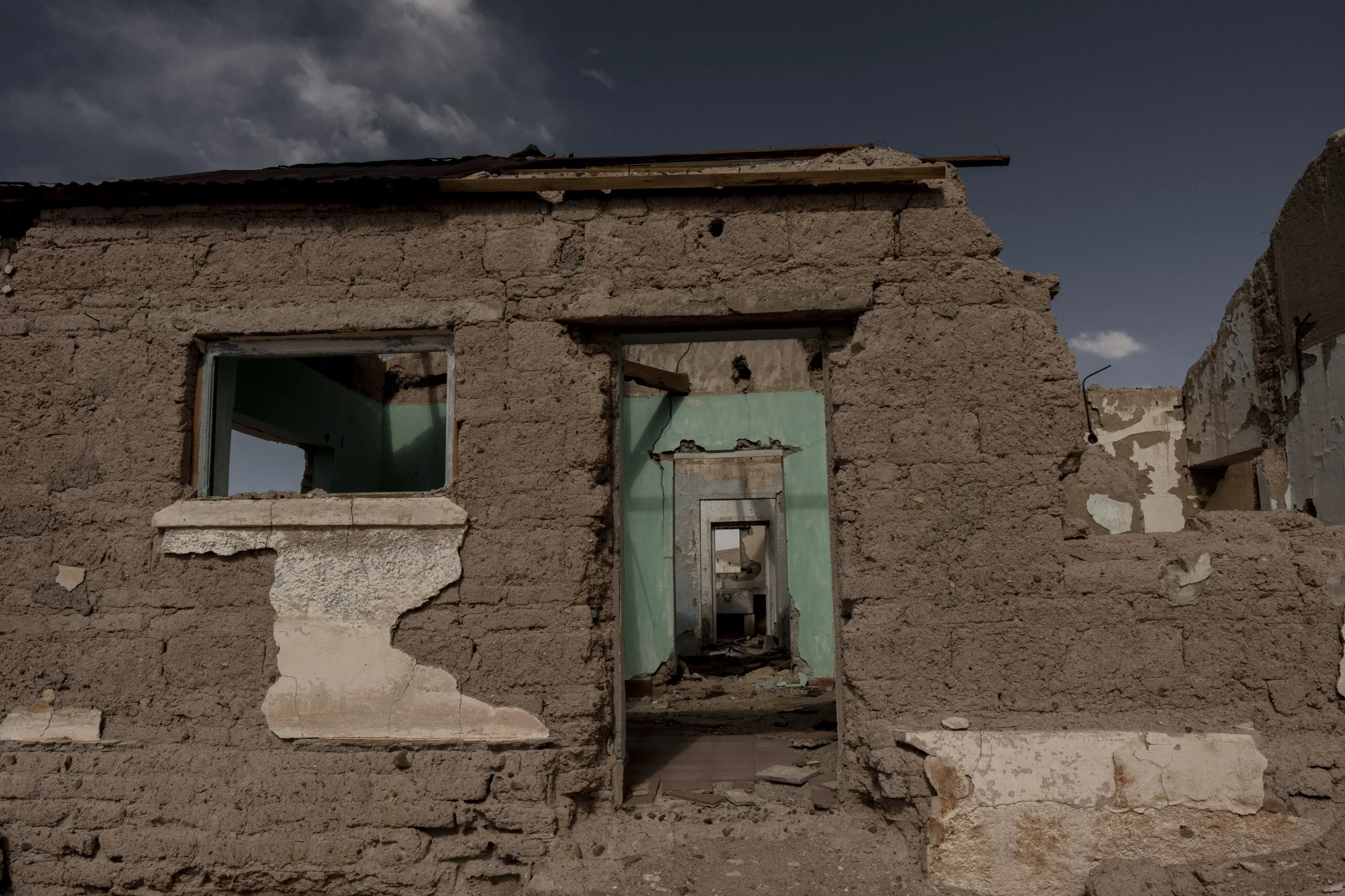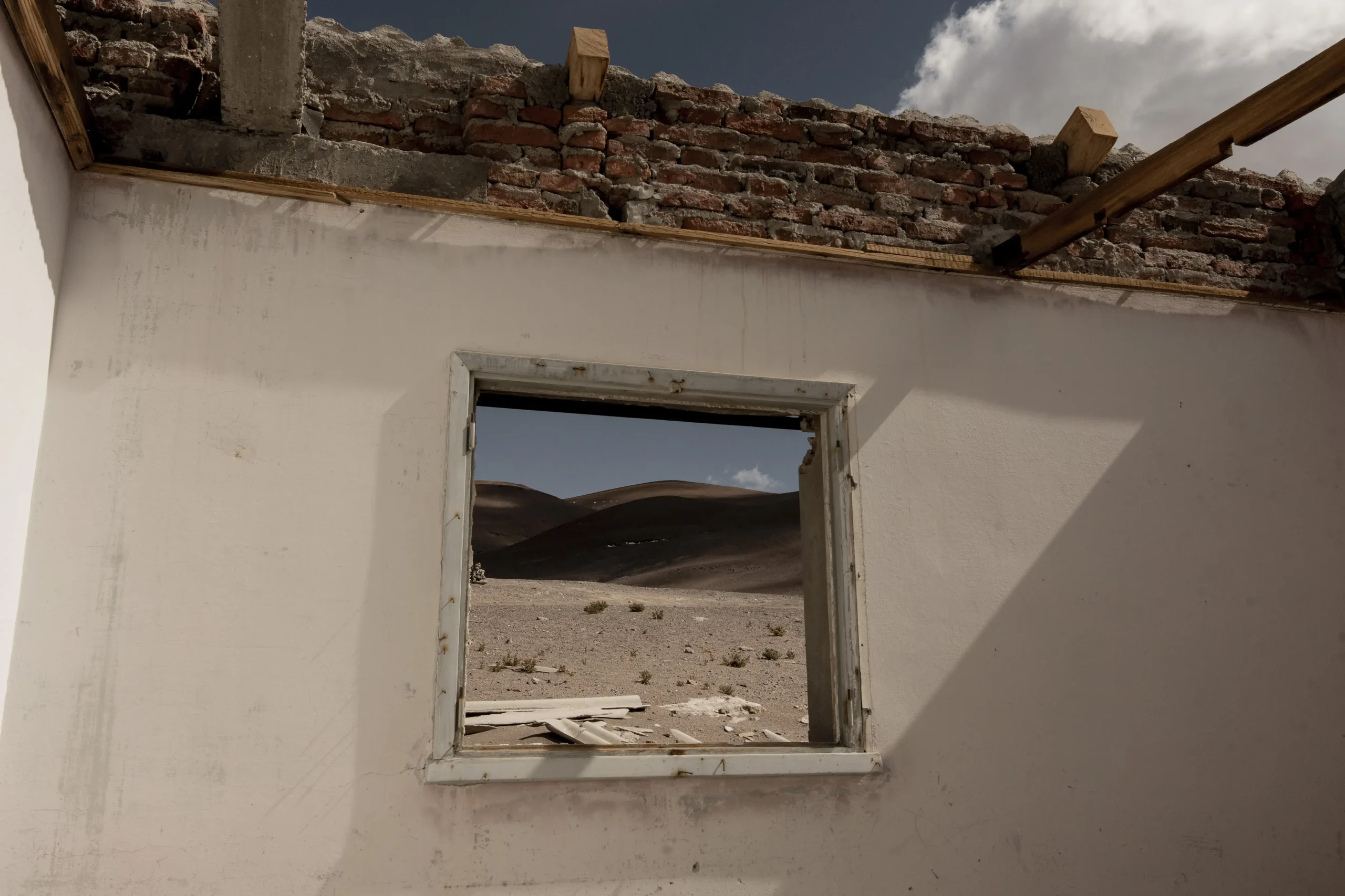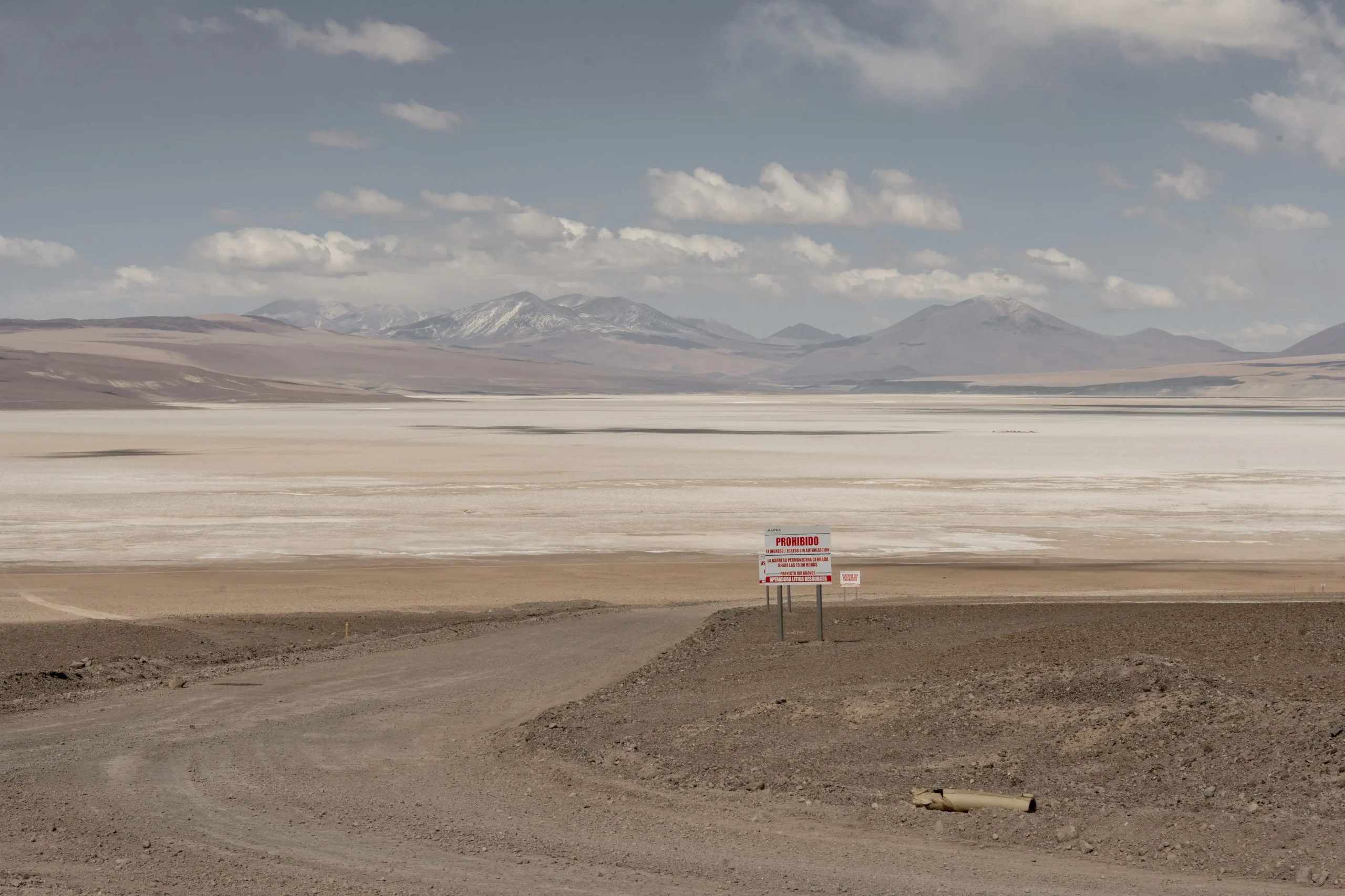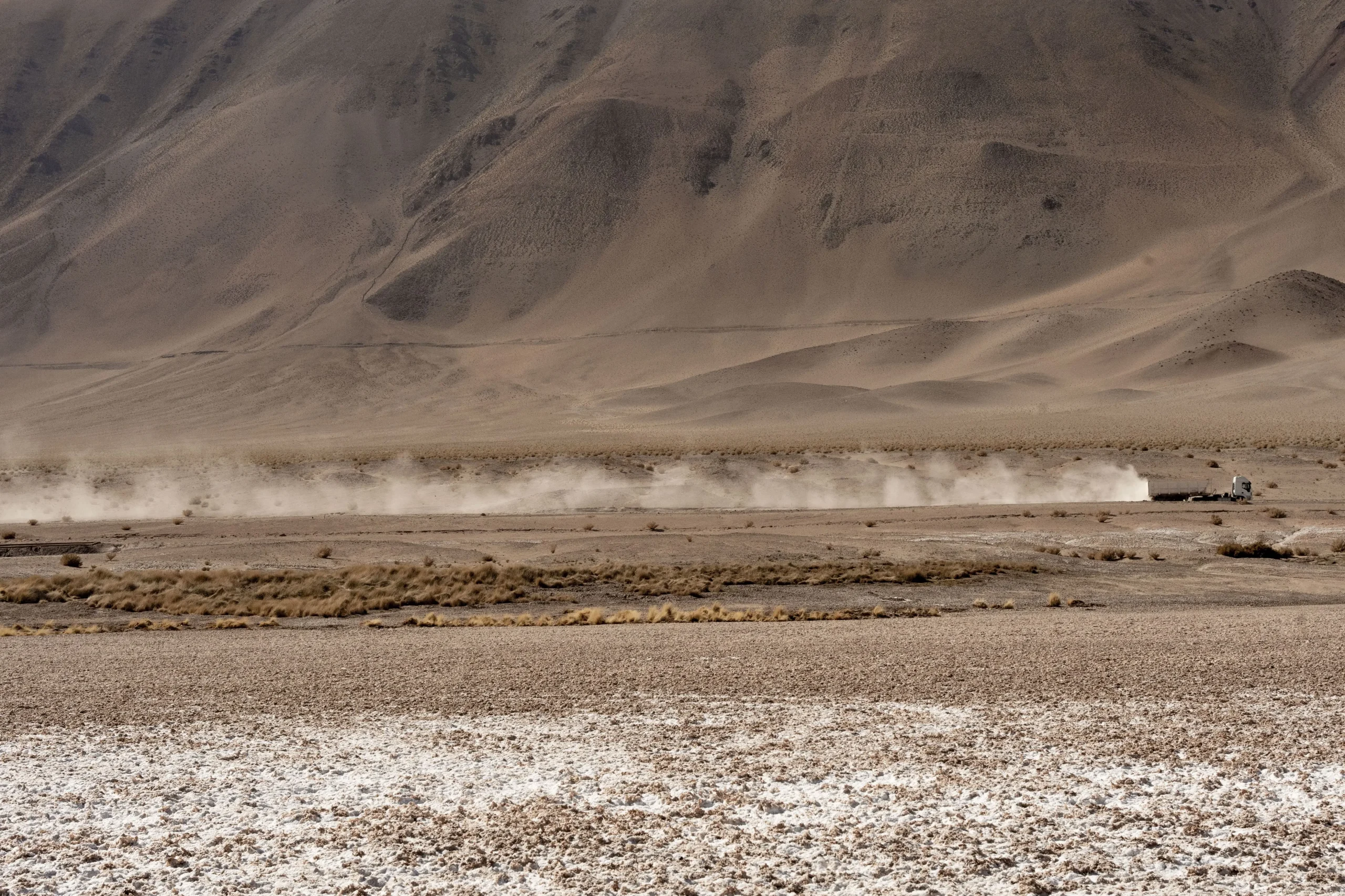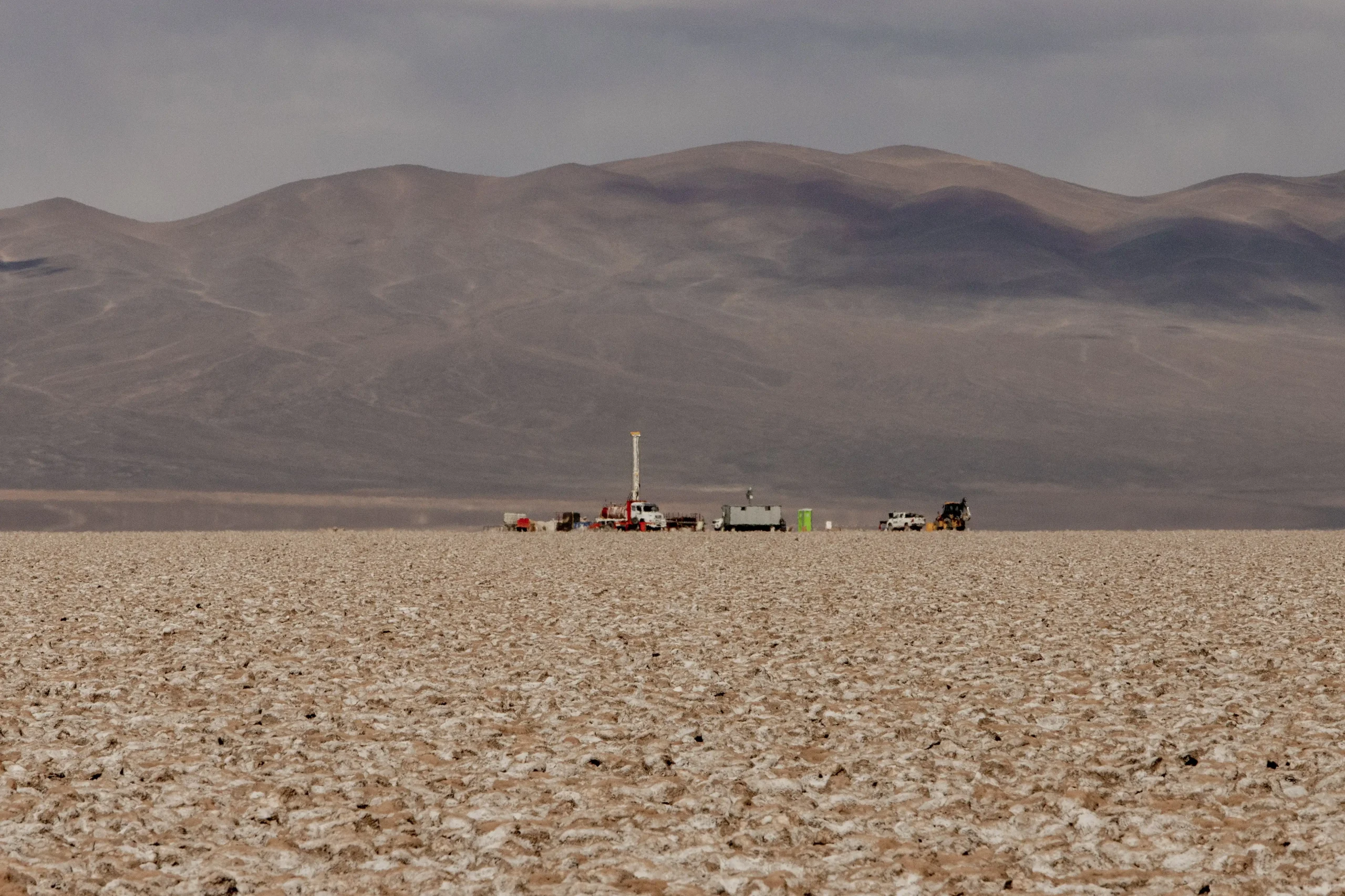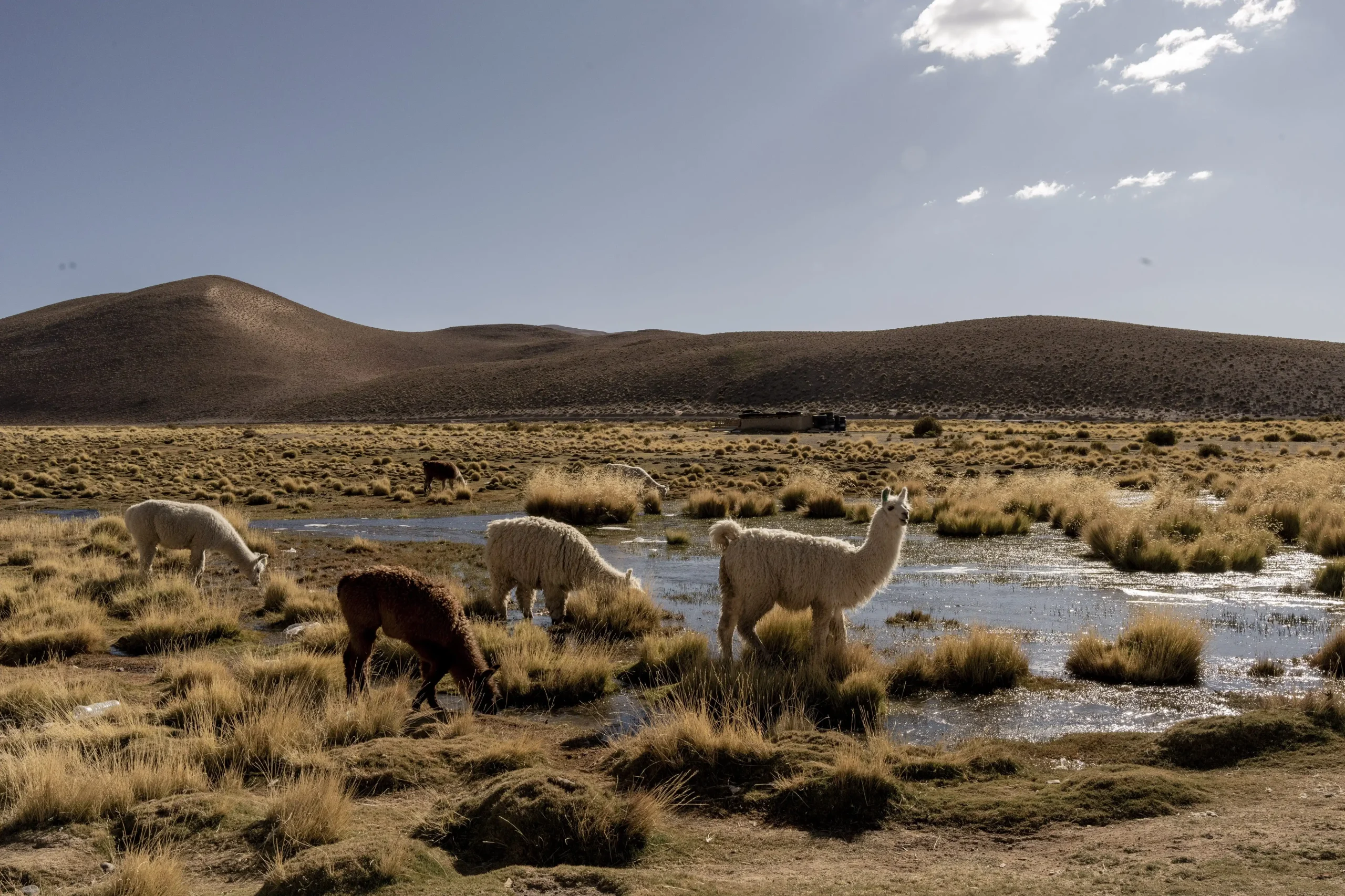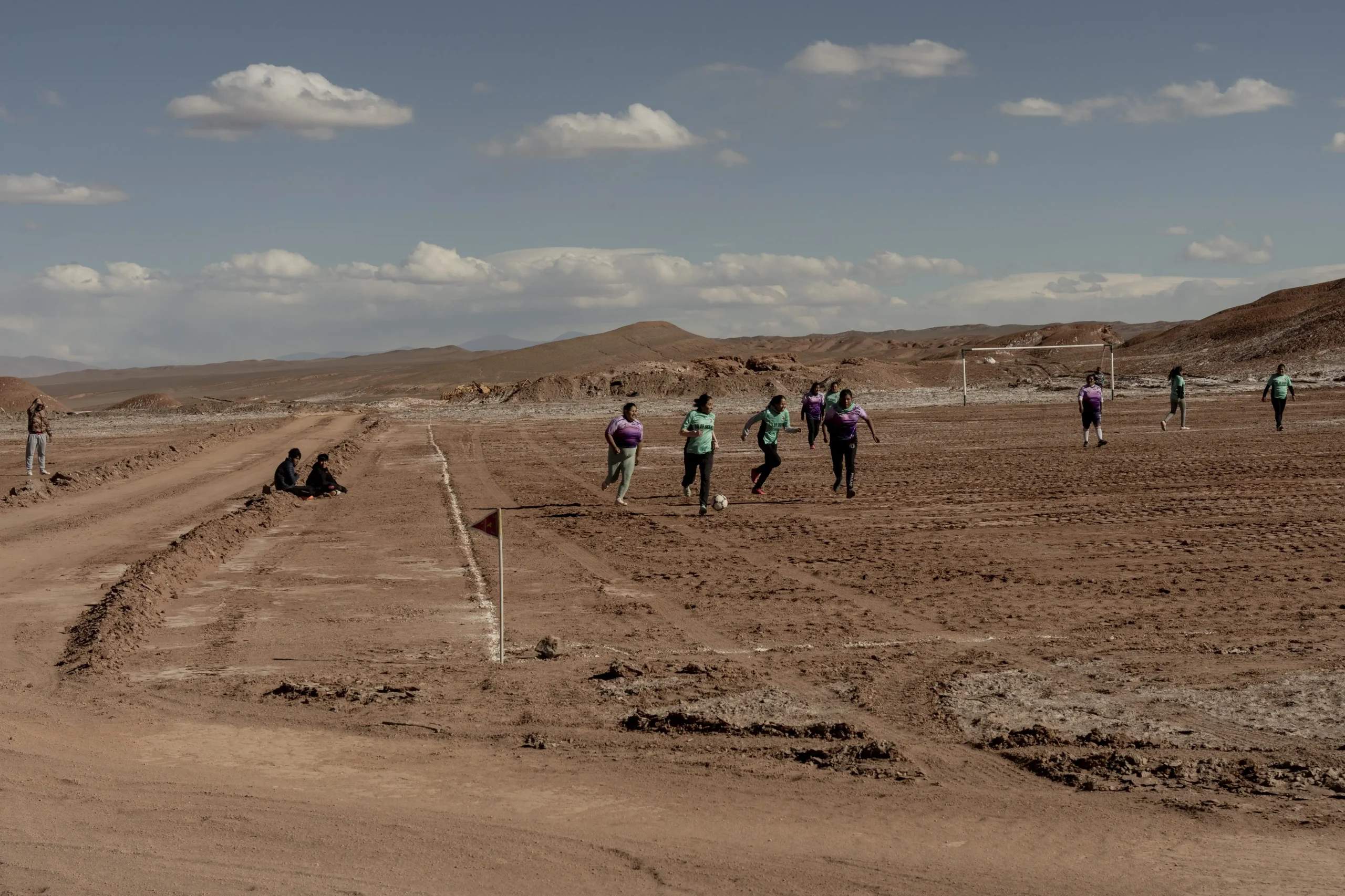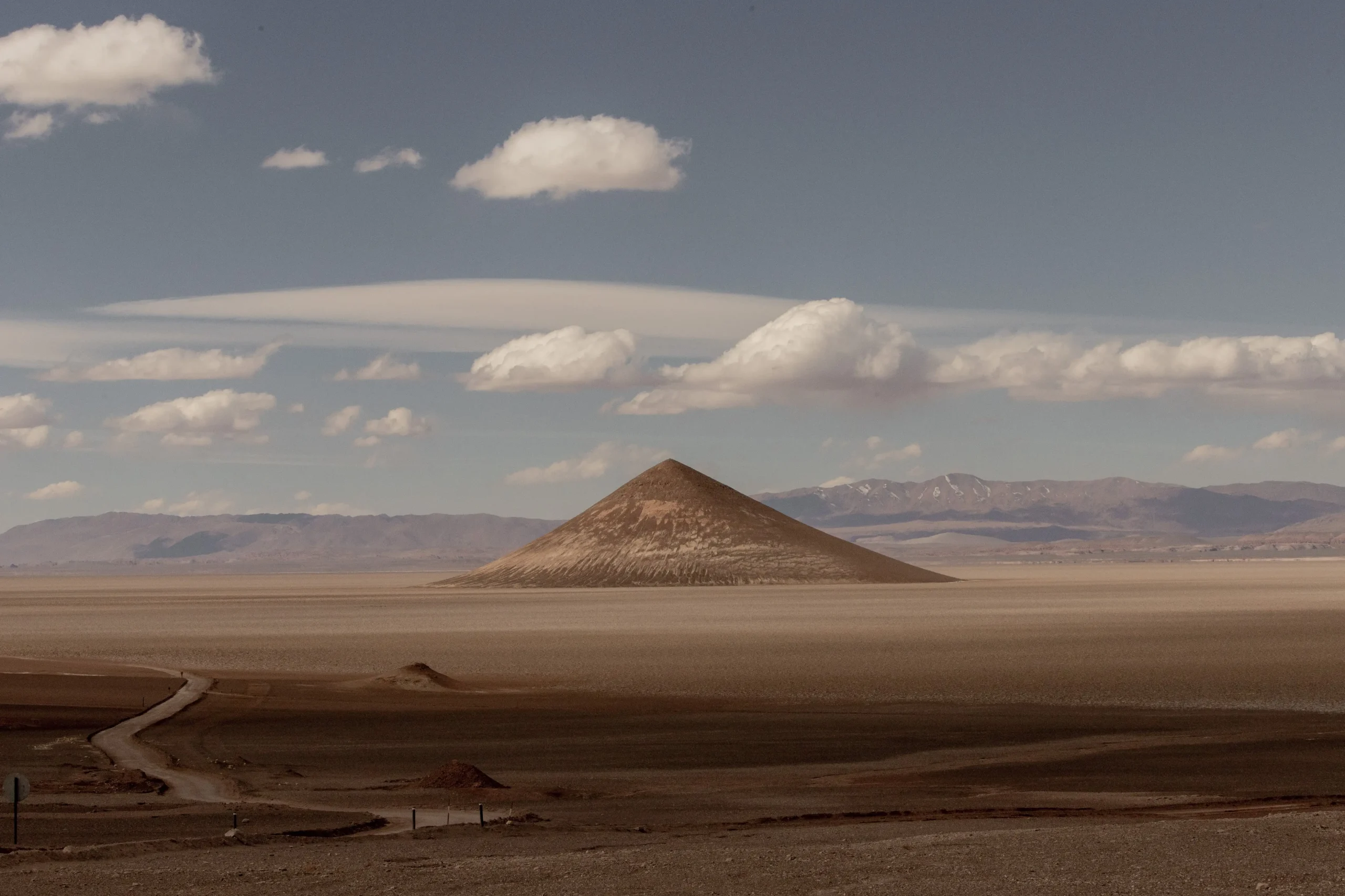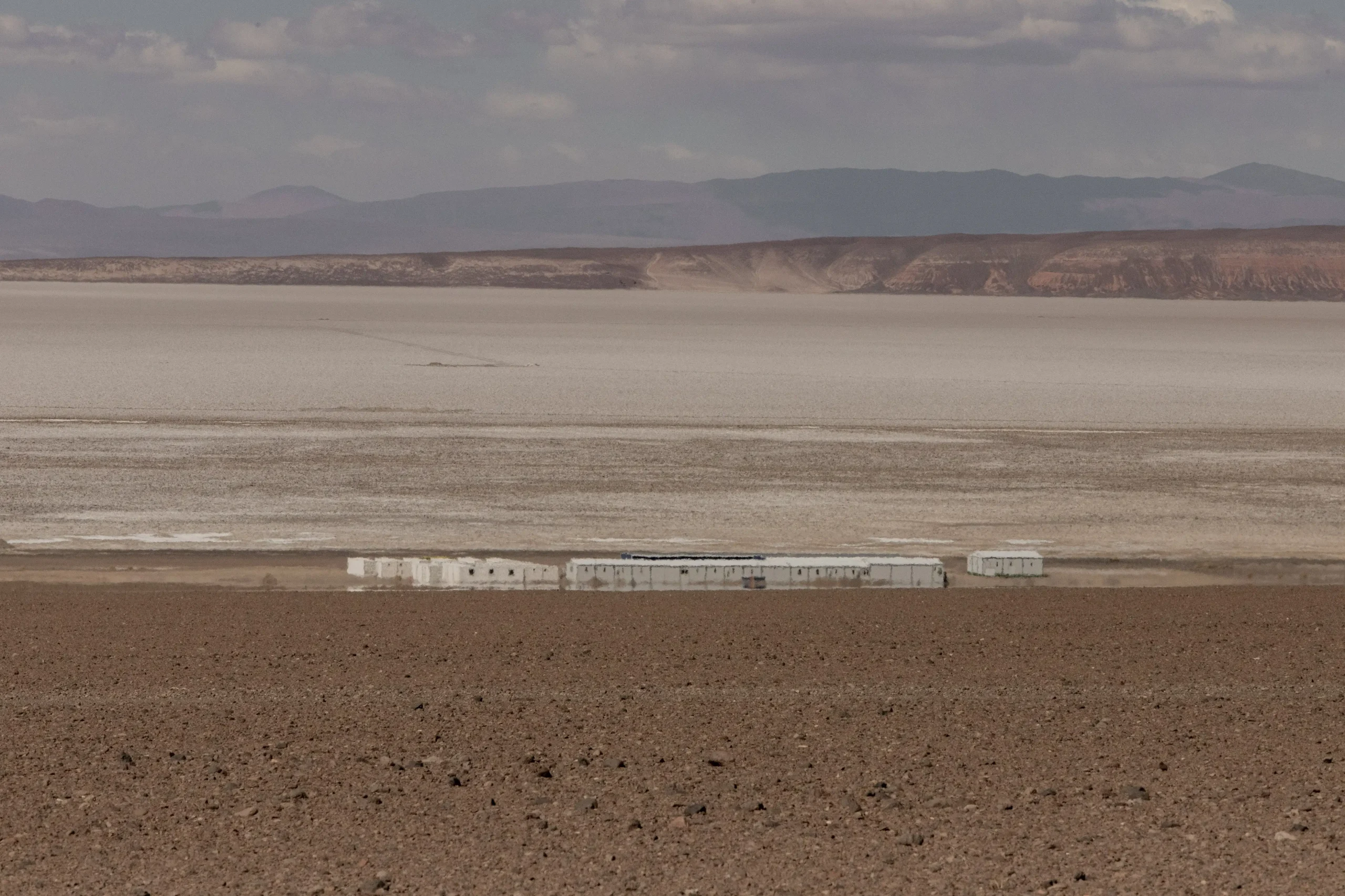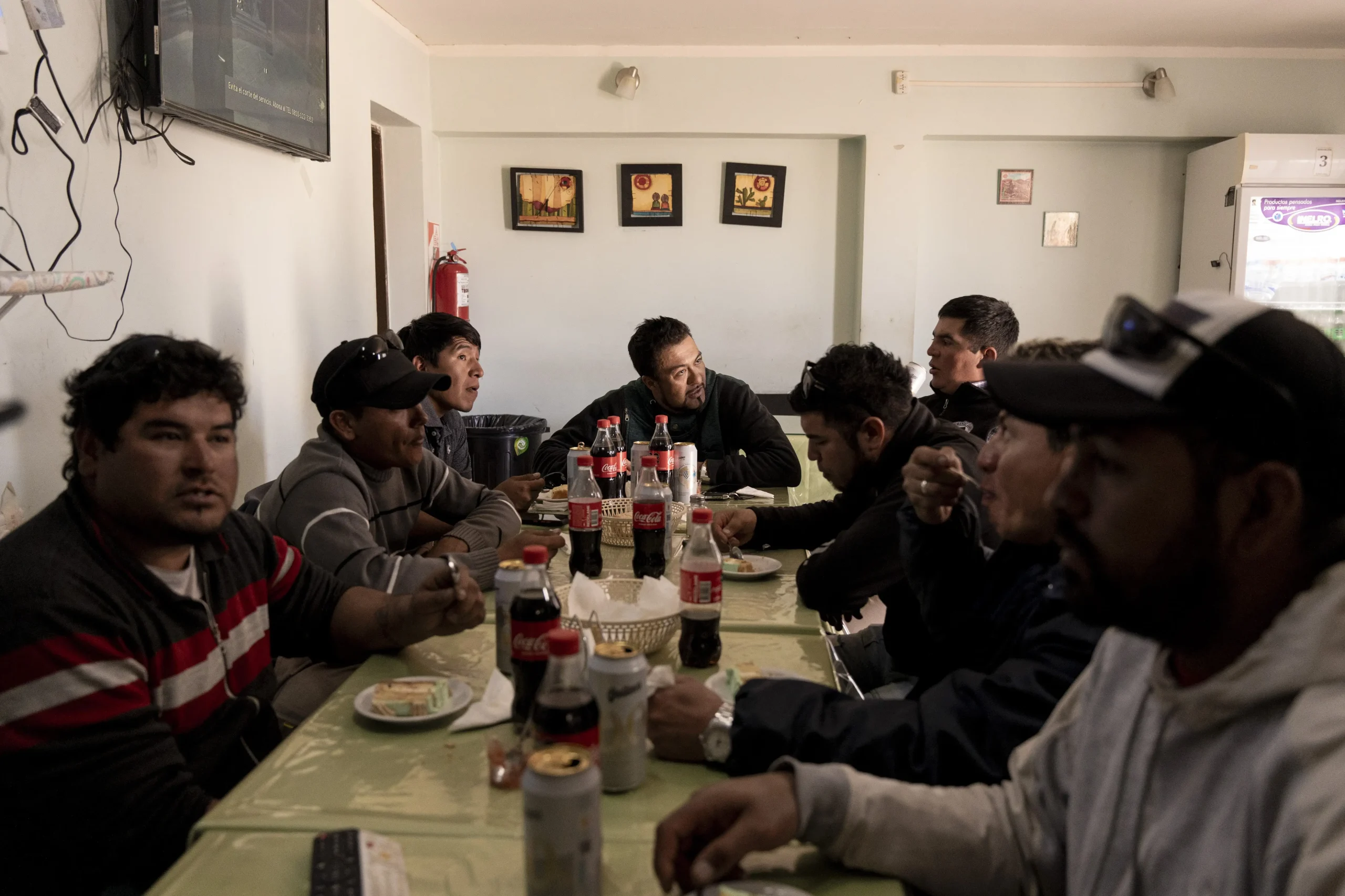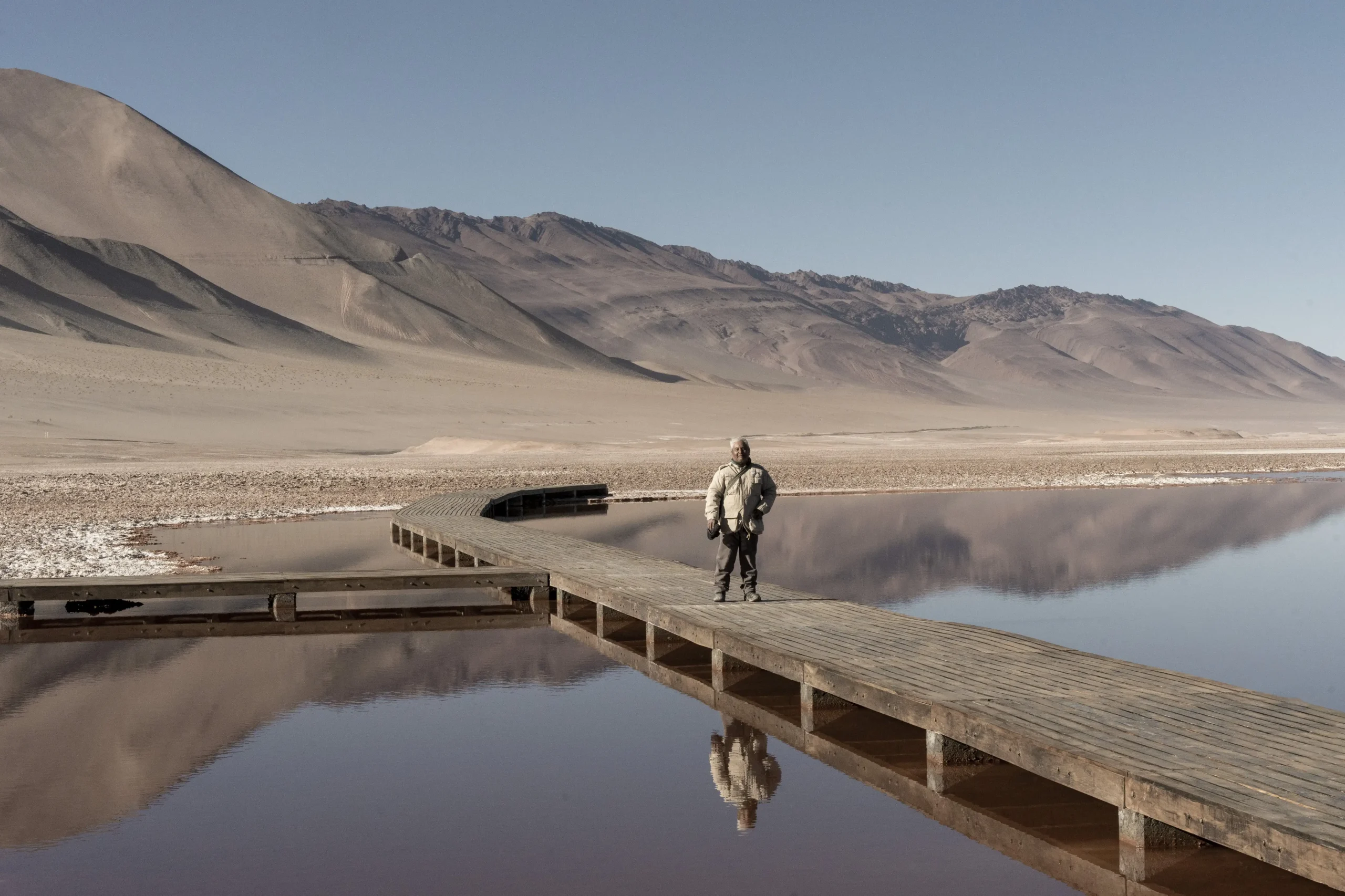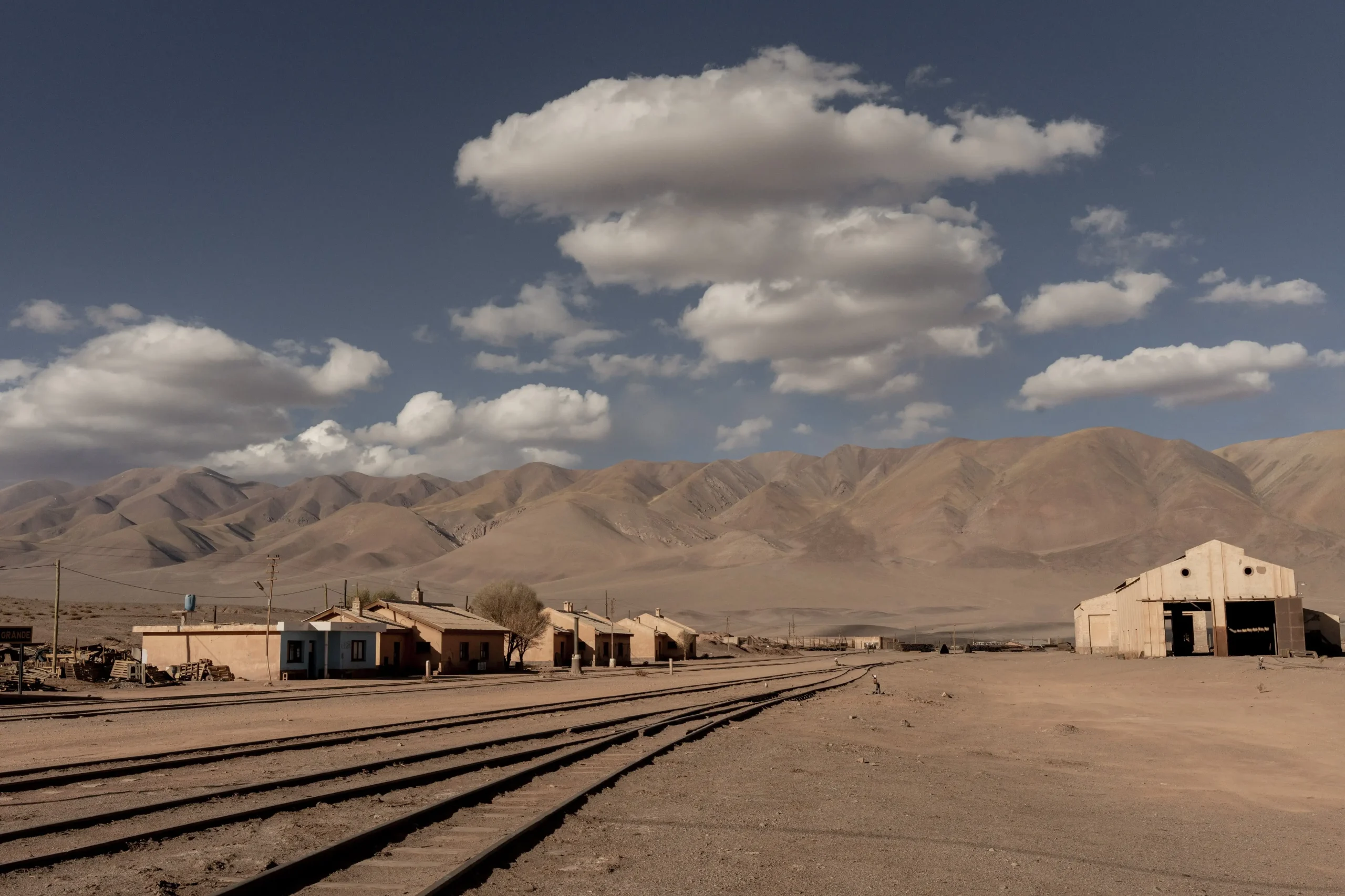
Argentina
Lithium tug of war: the US-China rivalry for Argentina’s white gold

David Feliba

Anita Pouchard Serra

Argentina
Lithium tug of war: the US-China rivalry for Argentina’s white gold

David Feliba

Anita Pouchard Serra
Despite its isolation, a nearby sulfur mine gave purpose to the town in the northwest province of Salta. For decades, mine employees and their families made this inhospitable place their home.
Today, La Casualidad is a ghost town. The mine’s closure in 1979 sealed the settlement’s fate. Rubble and empty streets now stand among snowy mountain peaks and the silence of the salt flats.
But a new surge in mining activity has gripped the area, this time focused on the white-hot rush for lithium. The lightweight metal is critical for manufacturing rechargeable batteries for energy storage and electric cars – technologies at the cornerstone of building clean economies.
Left virtually untouched for millions of years, the salt flats of the sparsely populated Puna plateaus are being transformed into a bustling lithium production centre, bringing both new economic opportunities and concerns of environmental degradation.
Salta’s mining secretary Romina Sassarini points to the potential benefits for local people. “We believe that mining can bring true development to these historically marginalised communities, which lack water, sewage systems and electricity,” she told Climate Home News in an interview.
The mine is one of five projects pursued by the lithium giant in Argentina, which has become the theatre of rival strategic interests between China and the US – each seeking to secure the lithium supplies they need to manufacture batteries.
Currently the world’s fourth-largest producer, Argentina boasts a fifth of the world’s estimated lithium resources – the second largest deposits.
Despite a recent slump in prices due to a slowdown in global battery demand, the government expects production to nearly double from 44,000 tonnes in 2023 to 81,000 in 2024, and increase nearly fivefold by 2028. The International Monetary Fund expects Argentina’s lithium exports to be worth billions of dollars by the end of the decade.
As the country’s production is set to soar, Beijing and Washington want a share of the country’s “white gold”.
China, the largest lithium-ion battery maker which refines most of the world’s lithium, has a clear head start when it comes to investing in Argentina’s nascent industry. But the US, which wants to build its own cleantech supply chains outside Chinese control, is seeking to counter Beijing’s growing influence in South America with fresh investments.
Q&A
What you need to know about clean energy and critical minerals supply chains
“After having been asleep at the wheel in terms of long-term strategic interests, the US is now trying to spot places where it may dislodge China’s dominance,” Rachel Ziemba, senior fellow at the Center for a New American Security, told Climate Home News.
US-China tug of war
Nearly 60% of the world’s known resources of lithium are concentrated in an area the size of California, encompassing territories in Argentina, Chile and Bolivia known as the “lithium triangle”. Here, lithium is extracted from brines underneath salt flats.
But while Bolivia is struggling to produce meaningful output, and Chile’s lithium investment has stagnated, Argentina is going after private investment at full throttle.
In recent years, the country has emerged as one of the hottest markets for lithium investment, wooing a plethora of international companies to its underexploited lithium-rich salt flats.
Nearly 50 projects, mostly in advanced stages of development, are underway in the northwest of the country. A recent industry analysis found that 11 of the 42 lithium projects expected to start production between 2022 and 2026 worldwide were in Argentina – the highest number of any country.
The burgeoning industry, however, has so far preferred to elude scrutiny. Climate Home made multiple requests to visit mining operations but all were rejected on grounds of insufficient capacity for visits.
Chinese investments have paid off. In 2023, 43% of Argentina’s lithium exports went to China, while 11% went to the US.
But the election of right-wing President Javier Milei, a self-proclaimed anarcho-capitalist, has marked a shift in Argentina’s foreign policy from previous left-wing administrations that favoured closer ties with China to a rapprochement with the US at China’s expense. In December, Milei rejected an invitation to join the expanded group of emerging economies known as the BRICS, where China is a dominant player.
At a time when “Western countries are waking up to the national security implications of having ignored the lithium triangle for so long… all the things that Milei is doing are just music to US officials’ ears,” said Leland Lazarus, associate director of national security at Florida International University’s Gordon Institute for Public Policy.
The US has been courting the Milei government to ensure it can keep importing Argentinian lithium. During a visit to Argentina in February, US Secretary of State Anthony Blinken said the US saw “extraordinary investment opportunity” in the country, citing lithium as a key area for US investment.
The International Development Finance Corporation, the US development finance institution, and the Minerals Security Partnership (MSP), a US-led collaboration of 14 countries seeking to catalyse investment in critical mineral supply chains, are both seeking new investment opportunities in the country, Blinken said. Argentina has since committed to joining the MSP forum to accelerate the development of projects.
But promised American investments are slow to materialise. “It is not clear to me what the US brings to the table right now,” said Ziemba.
One big-shot investor has Milei’s attention. Tesla owner Elon Musk, who seeks to secure lithium supplies to produce batteries for his electric cars, has publicly supported and courted the president since his election.
After reportedly discussing lithium “investment opportunities” during a meeting in April, Musk wrote on X following a second meet up in May: “I recommend investing in Argentina”.
To an exciting & inspiring future! pic.twitter.com/WUIqN7B2F6
— Elon Musk (@elonmusk) April 12, 2024
Alongside this boisterous rhetoric, China is quietly continuing to grow its portfolio of lithium projects across the country – cementing its position as a key trading and financial partner.
Despite Milei’s opposition to China’s socialist policies, his administration has maintained diplomatic relations with Beijing. Analysts agree that Argentina can’t afford to cut ties with China.
Salta’s lithium economy
In the northwestern provinces of Jujuy and Catamarca, where three lithium mines are already operational, developing the industry has proven to be a delicate balancing act.
Indigenous communities say lithium mining is drying up the soil and polluting the rivers. A court in Catamarca recently halted new mining permits over environmental concerns. In Jujuy, protests over changes to the provincial constitution facilitating lithium mining were reportedly violently repressed.
“Since the pandemic, 95% of all our mining has been focused on lithium. Today we have the highest number of exploration projects in the country,” said Salta’s mining secretary Sassarini.
“But we don’t have major conflicts with the community,” she added, insisting the local government’s “good relationship with communities” is “very appealing to international investors”.
However, dozens of local people living in towns across the area told Climate Home of their mixed feelings towards the lithium rush – an issue that has become divisive in some communities.
While the mining frenzy is creating job opportunities for local people, its encroachment on the environment, including the industry’s water use and drilling directly on the salt flats, is worrying many. Some are reluctant to speak out against lithium extraction because of fear of reprisals from neighbours who make a living from the new industry.
But that’s not the case for 60-year-old Marta Rios, a resident of Tolar Grande, a town on the edge of the Arizaro Salt Flat, one of the largest in the world. “Before, it was just us, you could drive for kilometres and not come across anyone,” she said.
“Now… so many companies have come in search of our lithium that it’s starting to worry us. What will remain of our salt flat once they leave?” she asked. “With so many tracks and drillings, it’s going to look like a sieve.”
However, manual mining jobs still beat most other local opportunities. The monthly salaries of over half a million pesos (nearly $500) – twice the minimum wage – are considered a small fortune here. Local people say this is slowly reversing decades of young people’s exodus to cities.
The Chinese way
In July, Salta province will inaugurate its first lithium mine: Centenario-Ratones – a joint venture between French company Eramet and Chinese firm Tsingshan, which is seeking to establish itself as a major producer of battery minerals.
The mine is expected to produce 24,000 tonnes of lithium carbonate yearly, equivalent to more than half of Argentina’s lithium exports in 2023.
The project will deploy an emerging lithium extraction technique, touted as faster and more environmentally friendly, known as Direct Lithium Extraction (DLE).
Unlike traditional operations, the process does not require water evaporation ponds, but pipes underground brine to extraction plants, where a chemical process separates the lithium from the rest of the liquid, which is then pumped back into the salt flat.
The technology has been hailed as potentially “game-changing” for the industry, promising to reduce its significant water consumption – a scarce resource in this arid region – while increasing production. But it remains largely untested at scale.
The Centenario-Ratones mine reflects the growing weight of Chinese investment in the region.
Despite lithium prices nosediving by more than 80% in 2023, leading some Western firms to slow down their operations, Chinese investments have remained steady.
In March, Chinese company Ganfeng expanded its stake in Argentina’s lithium sector by purchasing 15% of Lithium America’s Pastos Grandes project, which had been struggling and needed fresh capital, according to industry sources.
For MacMurray Whale, a lithium specialist at Cormark Securities, Chinese enterprises have the patience to cultivate Argentina’s nascent lithium market. “These companies are all about the longer term,” he said. “While firms like [US company] Albemarle may be worried about next year’s cash flow, [Chinese] companies like Gangfeng will just keep going since they think of their investment over a decade.”
In addition, Chinese companies tend to operate across the lithium supply chain, making them less vulnerable to volatile markets and giving them an edge over their Western counterparts, Whale explained. For example, Gangfeng’s operations include lithium extraction, refining and processing, battery manufacturing and even recycling.
The US government has been vocal about its concerns over China’s investments in South America’s lithium industry. The US military has publicly signalled the risk this poses to American cleantech supply chains. US General Laura Richardson, a senior US military figure in South and Central America, told the Atlantic Council about her efforts to step up US lithium investments in the region and “box out our competitors” amid “strategic competition” with China.
Boom and bust
Lithium’s volatility on global markets is being felt first-hand across Salta province. The metal’s price collapse has led to delays in mining operations. Locally, some are concerned that the economic benefits lithium has brought might not last. In a small eatery in the town of Pocitos, a group of miners celebrated Workers’ Day – a national holiday in Argentina – with locro, a hearty squash stew popular along the Andes. Staff brought out a cake decorated with a toy mining excavator.
“I hope to be able to retire doing this,” added 40-year-old Jorge Valdez. “But we’ll see how things go.”
For the inhabitants of these dry plateaus, the end of sulfur mining in the region and the abandonment of La Casualidad are a stark reminder of the transient nature of mining ventures. “We don’t want to repeat another La Casualidad here,” Sergio Villanueva, the long-serving mayor of Tolar, a village of 300 residents, told Climate Home.
In recent years, Tolar has become a crucial hub for lithium miners in the area. But “every mine has its end and we don’t want the town to disappear once they’re gone,” said Villanueva.
The mayor wants lithium companies to fund the construction of paved roads and other key infrastructure so the town can live off tourism when the mines close.
Among the debris of La Casualidad, an inscription in white paint on a rusted storage tank reads: “Born in La Casualidad. We’ll be back.”
So far, only lithium miners have returned.
Main image: Tolar Grande train station in Salta province, Argentina

David Feliba

Anita Pouchard Serra

Chloé Farand




